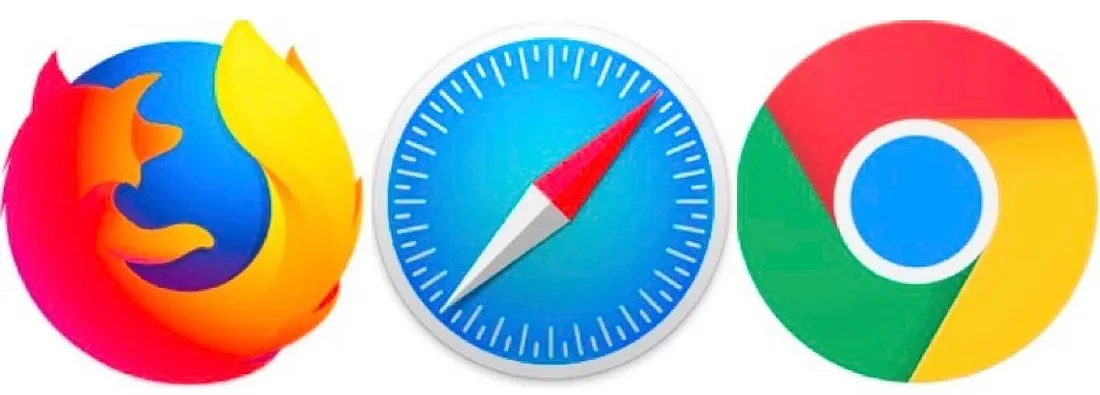In the modern world, we spend a remarkable portion of our lives looking through invisible windows. These windows are not framed in wood or glass — they are framed in pixels, hovering in front of us as we work, study, and unwind. The web browser is the portal through which we explore nearly everything: news, social media, research, shopping, entertainment, and entire universes of human creativity.
Yet for most people, a browser is simply “the thing you click to get to the internet.” The reality is far richer. Each browser carries a philosophy, a history, and a technical soul that shapes the way it interacts with the web. Chrome, Firefox, and Safari — three of the most influential browsers on Earth — are more than just competing products. They represent three distinct visions of how the internet should be experienced.
Choosing one over the other is not just a matter of preference; it’s a subtle decision that can change how fast pages load, how private your data remains, how secure your online world feels, and how seamlessly your digital life flows between devices. To understand them fully, we must look at them not merely as tools, but as personalities — with strengths, quirks, and sometimes flaws that mirror the values of the people who built them.
Chrome: The Engine of Ubiquity
When Google Chrome first launched in 2008, it entered a landscape dominated by Internet Explorer and Firefox. It was a time when browsers were often slow, clunky, and burdened by too many features. Chrome arrived like a breath of clean air: minimalist in design, lightning-fast in performance, and refreshingly free of clutter. Its single combined search-and-address bar — the Omnibox — was a small but radical rethinking of how we navigate the web.
Chrome’s speed came largely from its underlying engine, V8, a high-performance JavaScript engine that made web applications feel as smooth as desktop software. This was not a coincidence. Google understood that the future of the web lay in complex, interactive apps — and they needed a browser that could handle them without stuttering.
Over the years, Chrome has evolved into far more than a simple browser. It became an ecosystem, a foundation for the Chromium project that powers not only Chrome itself but also Microsoft Edge, Opera, Brave, and countless niche browsers. Its extension library exploded, offering everything from grammar checkers to ad blockers to advanced developer tools.
Yet Chrome’s dominance — with a market share that has at times exceeded 65% — is a double-edged sword. With ubiquity comes power, and with power comes scrutiny. Critics have accused Google of using Chrome to further its own advertising empire, collecting more data than is strictly necessary for functionality. Chrome’s hunger for memory is also legendary: open too many tabs, and it can feel as though the browser is devouring your computer’s RAM like an unending buffet.
Despite these criticisms, Chrome’s integration with Google’s services remains one of its strongest draws. For those deeply embedded in Gmail, Google Drive, Google Docs, and Android devices, Chrome feels like home — a seamless bridge between all corners of one’s digital life. It is the high-speed highway of the internet, but like any highway, it is constantly under surveillance.
Firefox: The Rebel with a Mission
If Chrome is the efficient superhighway, Mozilla Firefox is the scenic road that insists on respecting your privacy as you travel. Firefox’s roots stretch back to 2002, when it was born out of the ashes of Netscape Navigator as part of an open-source project. Its guiding principle from the very start was freedom: freedom for users to shape their browsing experience, freedom from monopolistic control, and freedom from invasive data collection.
Firefox operates under the stewardship of the Mozilla Foundation, a nonprofit whose mission is to keep the internet open and accessible to all. This distinction matters deeply. Unlike Google, which ultimately answers to shareholders, Mozilla answers to a community of users and developers who are united by a philosophy rather than a corporate profit motive.
Over the years, Firefox has been a laboratory of innovation. It introduced tabbed browsing before it was cool, integrated pop-up blocking as a standard feature when it was still considered optional, and built advanced customization tools that allowed users to tailor their browser to their exact needs.
In recent years, as privacy concerns have grown louder, Firefox has sharpened its focus on being the privacy-first browser. Its Enhanced Tracking Protection blocks third-party cookies by default, and its partnership with privacy tools like Pocket and VPN services shows a consistent alignment with the idea that your data should belong to you alone.
Performance-wise, Firefox has seen highs and lows. There was a period in the mid-2010s when it lagged behind Chrome in speed, leading some users to abandon it. But the release of the Quantum engine in 2017 was a turning point — a complete overhaul that made Firefox faster, leaner, and more efficient than it had been in years.
Firefox’s cultural identity is that of the underdog — not as flashy as Chrome, not as tightly woven into an operating system as Safari, but fiercely loyal to those who believe in a freer web. For users who value control, transparency, and a sense that their browser is working for them rather than the other way around, Firefox remains a compelling choice.
Safari: The Polished Gatekeeper
If Chrome is the speed demon and Firefox the principled rebel, Apple Safari is the elegant gatekeeper, designed to be an extension of Apple’s broader ecosystem. First released in 2003, Safari has always been deeply integrated into macOS and later iOS, reflecting Apple’s obsession with smooth, curated experiences.
Safari’s interface is clean, understated, and designed to get out of the way so that content can take center stage. Its optimizations are particularly evident on Apple hardware. Safari is built to sip rather than gulp power, meaning MacBooks can often squeeze extra hours of battery life compared to running Chrome or Firefox. On iPhones and iPads, Safari is more than just the default browser — it’s a core part of how iOS handles web interactions, tightly bound to system features like Keychain for password management and Handoff for seamless browsing across devices.
Apple has also leaned heavily into privacy as a selling point. Intelligent Tracking Prevention uses machine learning to identify and block trackers, and Safari’s Privacy Report gives users a clear breakdown of which trackers have been stopped. Unlike Firefox’s grassroots ethos, Safari’s privacy focus is part of a broader Apple marketing narrative: the company presents itself as the guardian of user data in a digital landscape full of bad actors.
Safari’s weaknesses are often tied to its strengths. Its deep integration with Apple’s world means it’s less friendly to those who live in a cross-platform environment. While Chrome and Firefox aim for uniformity across operating systems, Safari’s best features are often locked behind the Apple wall. Developers sometimes grumble about Safari’s slower adoption of certain web standards, which can force them to write extra code to ensure compatibility.
Yet for Apple users who embrace the ecosystem fully, Safari is unmatched in harmony. It’s not just a browser; it’s a native citizen of the Apple experience.
Speed, Privacy, and Philosophy
When comparing Chrome, Firefox, and Safari, it’s tempting to focus solely on benchmarks — milliseconds shaved off loading times, memory consumption measured in megabytes, security flaws patched in the last update. But the real story is not just about performance; it’s about philosophy.
Chrome thrives on ubiquity and integration with Google’s services, prioritizing speed, functionality, and a vast extension ecosystem. It assumes that users want to trade some degree of privacy for convenience and capability.
Firefox, by contrast, treats privacy as non-negotiable. It is built on a belief that the browser should be a neutral vessel, not an extension of a data-driven business model. It sacrifices some integration perks for the sake of independence and transparency.
Safari offers privacy too, but as part of a curated, hardware-optimized experience. It’s less about ideological purity and more about engineering a seamless environment for Apple’s customers.
The Choice We Make Every Day
The question of which browser to use is not just about which one is “best” in a universal sense — because there is no such thing. It is about alignment between the browser’s philosophy and the user’s needs. A journalist researching sensitive topics may find Firefox’s privacy posture essential. A designer working on a MacBook may value Safari’s battery efficiency and clean typography. A business professional immersed in Google’s ecosystem may find Chrome’s syncing capabilities indispensable.
What’s fascinating is that this choice, often made casually when setting up a new device, can shape our relationship with the internet for years. It determines how much of our browsing history is logged, how quickly websites respond to our clicks, and even how much control we feel over our own data.
In the end, these browsers are not just pieces of software. They are philosophies made tangible — each one a particular vision of the web. Chrome is the fast-moving train, Firefox the principled path, Safari the curated gallery. The one you choose is the one you invite to frame your world.





